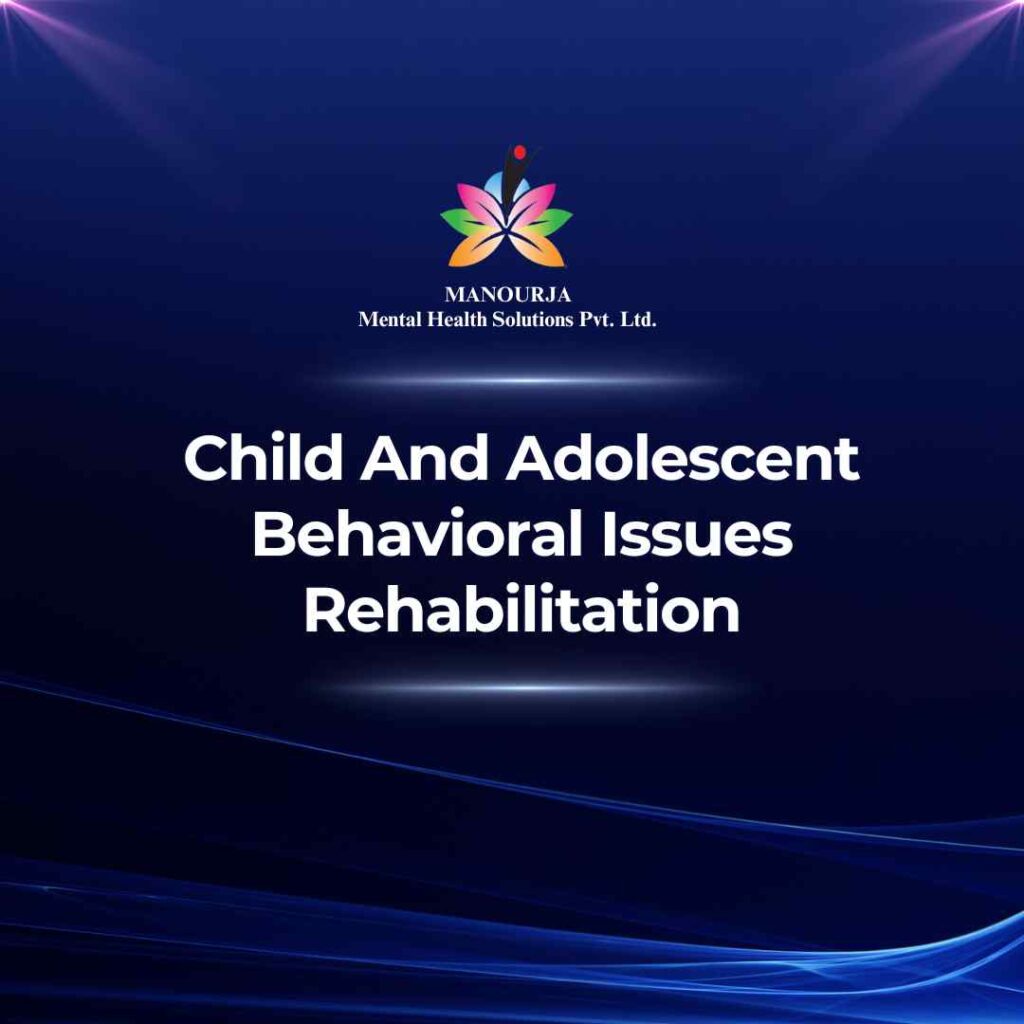Child and Adolescent Behavioral Issues Rehabilitation

Child and adolescent behavioral issues can range from common disruptive behaviors to more serious emotional and behavioral disorders. These issues, if left unaddressed, can significantly impair a child’s ability to function in social, educational, and family settings. Recognizing the signs and symptoms early can lead to timely and effective intervention.
Signs and Symptoms of Child and Adolescent Behavioral Issues
- Aggression: Displays of anger and hostility towards peers, family members, or authority figures.
- Defiance: Frequent refusal to comply with rules or directions, defiance of authority.
- Hyperactivity: Excessive energy levels that are not appropriate to the setting or situation, difficulty sitting still.
- Inattention: Difficulty focusing on tasks, frequent daydreaming, or not listening when spoken to directly.
- Social Withdrawal: Avoiding or retreating from social interactions with peers or family members.
- Mood Swings: Rapid and intense shifts in mood that are inappropriate to the situation.
- Academic Challenges: Declining grades, frequent school absences, or a lack of interest in school-related activities.
- Risk-Taking Behaviors: Engaging in activities that are dangerous or involve a high risk of harm.
Indicators for Outpatient Psychosocial Rehabilitation (OPD)
- Mild to Moderate Symptoms: Symptoms are present but do not severely disrupt daily life or safety.
- Stable Home Environment: The child or adolescent lives in a supportive environment conducive to outpatient treatment.
- Family Involvement: The family is willing and able to be involved in treatment, attending sessions and supporting home-based interventions.
Indicators for Inpatient Psychosocial Rehabilitation (IPD)
- Severe Behavioral Issues: Extreme and persistent behaviors that pose a danger to the child or others.
- Co-occurring Mental Health Conditions: Presence of other psychiatric conditions such as severe depression, anxiety disorders, or substance abuse.
- Ineffectiveness of Outpatient Treatment: Previous outpatient treatments have failed to adequately manage the behavioral issues.
Factors Influencing the Decision
- Severity of the Issue: More severe cases may require the structured environment of inpatient care.
- Risk to Safety: Immediate risk of harm to the child or others can necessitate inpatient treatment.
- Family and Social Support: Availability and quality of support systems at home can influence the suitability of outpatient care.
How Psychosocial Rehabilitation Aids in Treating Behavioral Issues
Psychosocial rehabilitation focuses on improving communication, behavioral responses, and emotional regulation. It aims to provide the child or adolescent with tools to manage their behaviors more effectively, enhancing their ability to function in daily life.
Techniques and Approaches Utilized at MANOURJA
- Cognitive Behavioral Therapy (CBT): Helps in identifying and modifying negative thought patterns and behaviors.
- Family Therapy: Engages family members to improve communication and resolve conflicts within the home.
- Behavioral Modification Techniques: Uses positive reinforcement to encourage desirable behaviors and consequences to reduce undesirable behaviors.
- Social Skills Training: Teaches the child or adolescent how to interact appropriately with peers and adults.
- Group Therapy: Provides a setting to learn from peers and practice new skills in a safe environment.
Steps Followed at MANOURJA for Rehabilitation
- Initial Assessment: Comprehensive evaluation to understand the nature and extent of the behavioral issues.
- Development of a Treatment Plan: Tailored to the specific needs of the child or adolescent, involving the family in the planning process.
- Implementation of Treatment Interventions: Structured application of therapeutic techniques in individual, family, or group settings.
- Regular Monitoring and Evaluation: Ongoing assessment of progress and adjustment of treatment strategies as necessary.
- Transition and Aftercare Planning: Preparing the family and the child for the transition back to everyday life, with strategies to maintain gains and prevent relapse.
“Every step forward, no matter how small, is progress in your journey toward a happier life.”
